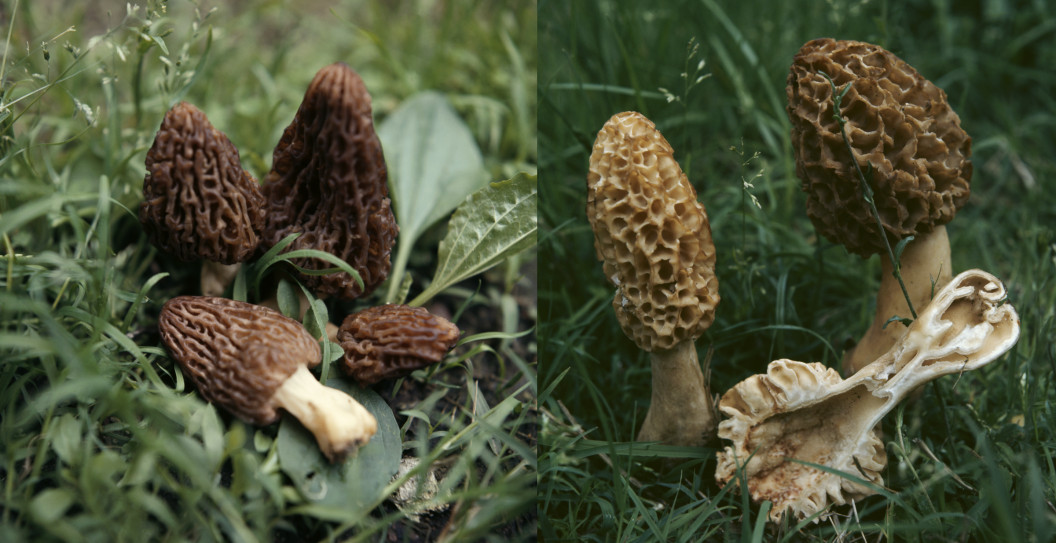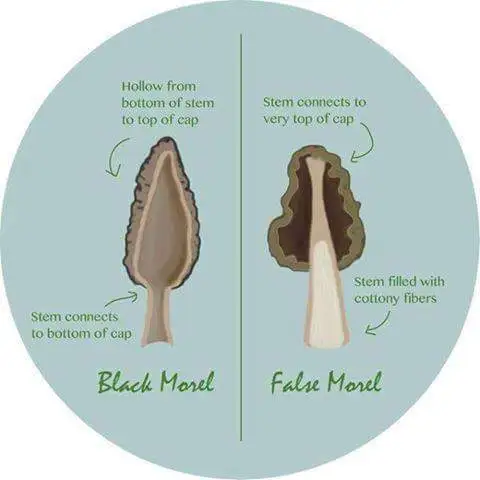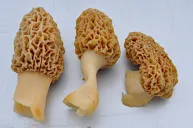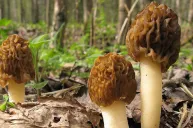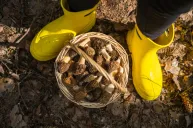Spring in North America welcomes many things, one being morel mushrooms. There are a few types of morels, including true morels and false morels. There are more species of false morels than true morels. Both true morels and false morels tend to grow in the spring, under hardwood trees, especially ash and elms. Because of the similar ways these different species present, mushroom hunters are likely to come across false morels in their quest for true morels.
The Good and the Toxic
Before delving into morel mushroom hunting, foragers should have a solid grip on basic mushroom identification. What sets safe-to-eat true morels apart from false morels is a toxin known as monomethyl hydrazine (MMH), which is the same chemical found in certain rocket fuels and can cause dizziness, vomiting, and in some cases even death.
Mycologists know that true morel mushrooms are identified by narrow, pitted, wrinkled caps which are cone-shaped, hollow caps and stems, and caps attached to the stem rather than free hanging.
Black morel mushrooms have four lookalikes, and three of them are considered toxic—so it's important to be able to tell the difference.
The good news: The three toxic wild mushrooms, Verpa Bohemica, Genus Gyromitra, and Verpa conica, are pretty easy to tell apart from true morels, if you know what to look for. Don't let the simplicity fool you, though. One simple case of misidentification can have some nasty consequences, including symptoms of mushroom toxicity, gastrointestinal upset, illness, and death. So, although morel mushroom identification is basic, pay close attention to the small distinctions between the different species.
It is a good idea to carry a guidebook while foraging, to compare notes and photos, rather than relying on memory. A good one is Mushrooming Without Fear: The Beginner's Guide to Collecting Safe and Delicious Mushrooms.
Read on for the top four most common false morels and ways to identify each mushroom species.
Morel Mushrooms Top Lookalikes
1. Wrinkled Thimble Cap (Verpa Bohemica)
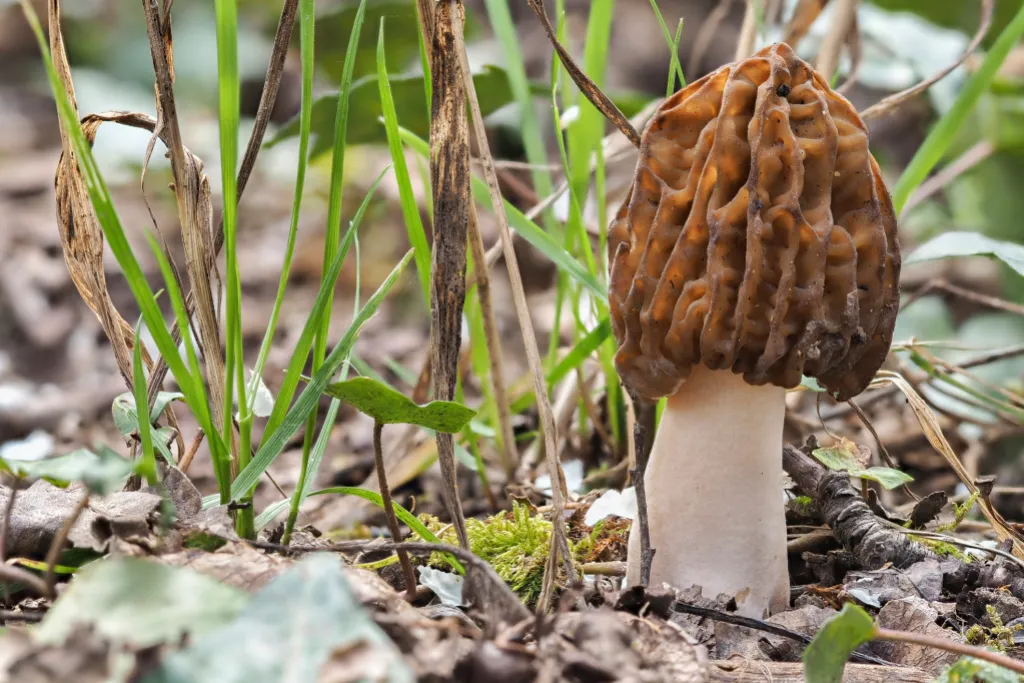
The Early False Morel (Verpa bohemica) is an edible mushroom, and an interesting photo
Verpa Bohemica, or wrinkled thimble cap mushrooms, are sometimes, but not always, toxic. Still, we don't like those chances. Verpa Bohemica is also sometimes called the early morel, early referring to the fact that Verpas generally mature just before and in the beginning of morel season.
The feature on Verpa Bohemica that most closely resembles true morels is the sort-of honeycomb cap, which is a trademark for true morels. On a wrinkled thimble, the honeycomb cap has sharp ridges and a more wrinkled look, like a sheet or brain. Cut in half, these wild mushrooms are not hollow, while morel caps are completely hollow inside.
2. Gyromitrin
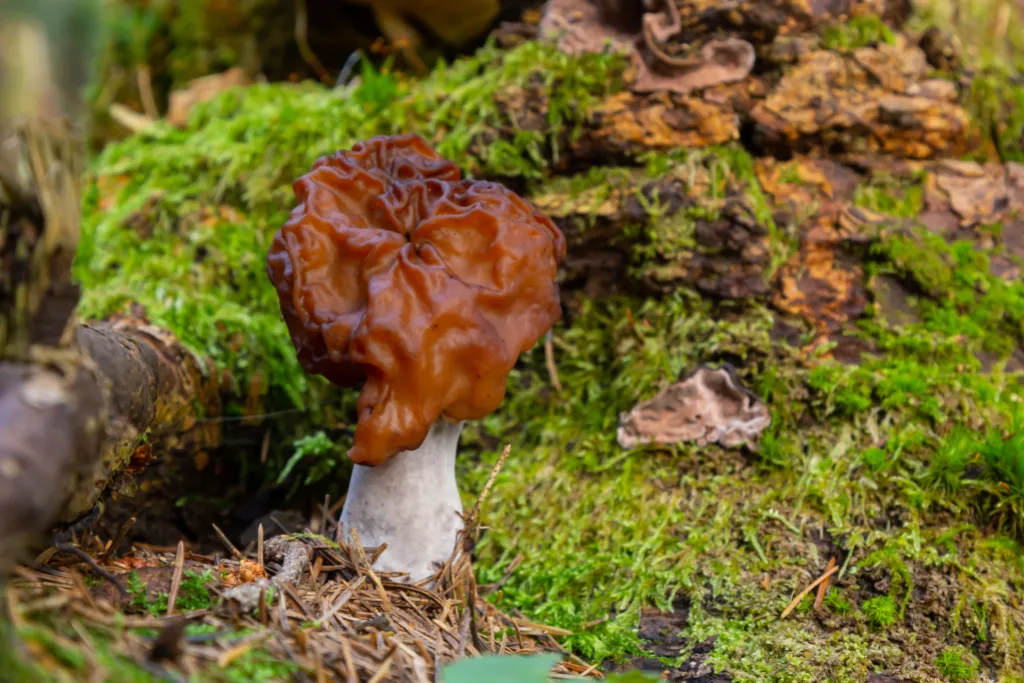
Gyromitra esculenta False morel, Calf brain, Bull nose mushroom in the forest. First spring mushrooms. Selective focus.
Gyromitrin mushrooms are also sometimes toxic, though usually just in small amounts. That means if you eat it in small quantities, the toxins can cause nausea, stomach cramps and diarrhea. But in large quantities, eating a Gyromitra species can cause convulsions, jaundice, come, or even death.
These risks are most closely associated with two species of false morels: Gyromitra Esculenta and Gyromitra Ambigua. Many mushroom hunters in Europe consider false morels outside of those two species to be edible once cooked, but we preach caution. Note: even true morels can cause gastrointestinal upset when eaten raw, so it's a good rule of thumb to always cook morels before consumption.
Gyromitra species can be found in many places where morels are also found. These poisonous mushrooms have the ridged caps of a true morel, but otherwise it's much wider than it is tall, and its ridges don't look like a honeycomb. Species of Gyromitra will have a much redder hue than a true morel will ever be, and when you cut it in half, it's not hollow. All true morels will always be hollow.
3. Thimble Morel or Bell Morel (Verpa Conica)
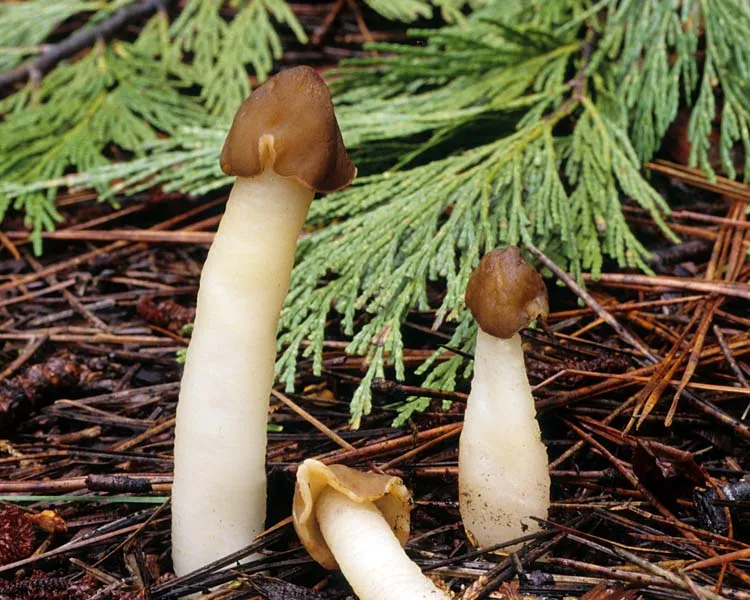
Fred Stevens
Thimble Morels, in our opinion, look a lot like true morels. But they have very small, barely-visible ridges and a tiny cap. Moreover, these wild mushrooms have a skirt- or umbrella-like cap attachment.
Warning: The stem here is hollow, just like a true morel. But the cap doesn't flow seamlessly into the stem but instead sits more underneath it.
4. Half-Free Morels (Morchella Semilibera, M. Punctipes, M. Populiphila)
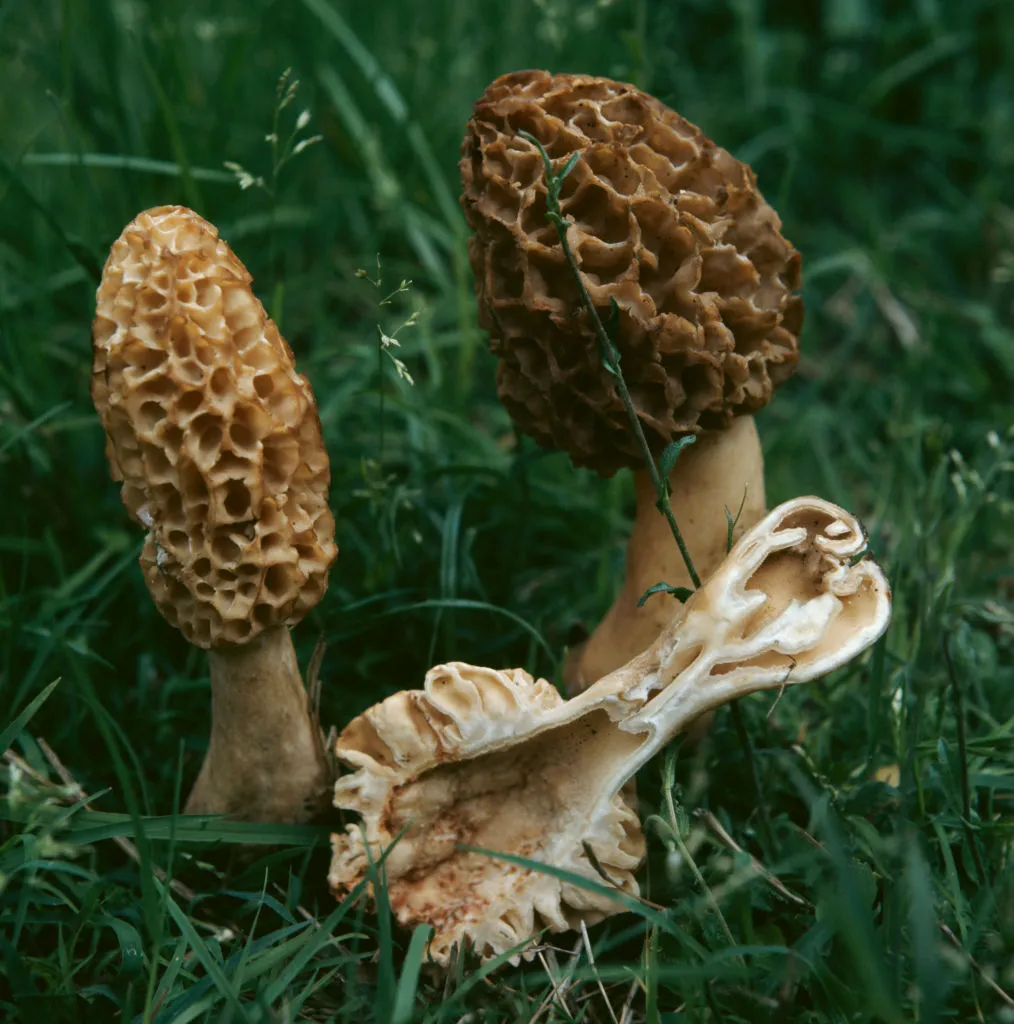
Half-free morels (Morchella vulgaris), Morchellaceae. (Photo by DeAgostini/Getty Images)
Half-Free Morels are the closest relative to true black morels and look a lot like them. Luckily, they're edible. They just don't taste great. Half-free morels look like an ugly step-sibling to true morels, but they're not harmful for you to eat (just not particularly tasty).
The main feature that sets them apart is that their cap looks like it's half free, meaning the cap doesn't flow seamlessly into the stem but instead tucks under. Usually, Half-Free Morels also have a really long stem compared to a true morel.
How to Tell Real Morel Mushrooms from Fakes
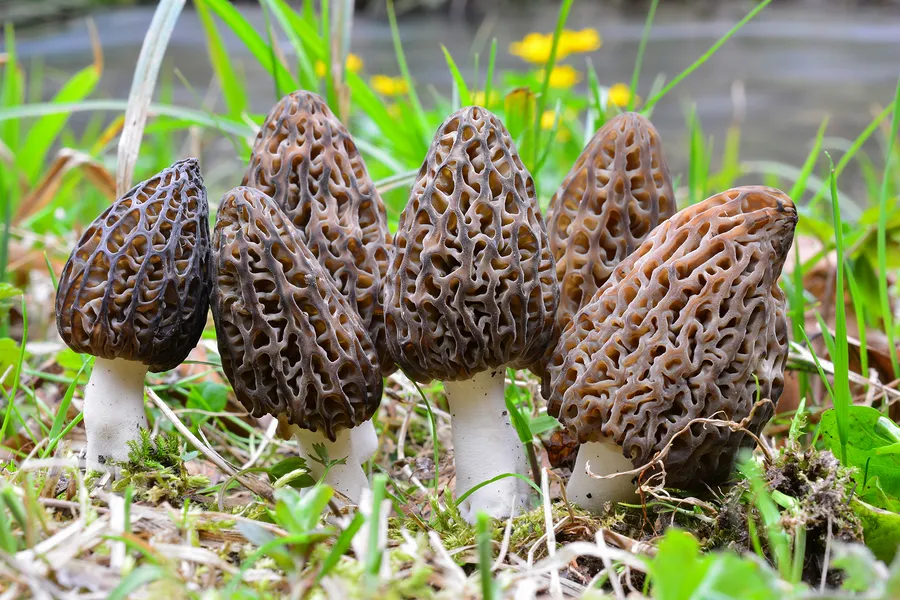
1. Look At the Cap
False Morels
- Irregular, "squished" shape
- Outward bulges
- Wave shape
- Hangs freely off the stem
Real Morels
- Uniform shape
- Pitted inwards
- Covered in pits and ridges
- Attached directly to the stem
2. Examine the Stem
Real morels have a hollow stem. Also, their overall shape is typically longer than they are wide.
False morels have a solid stem, and are often (but not always) wider than long. A false morel will have cottony fibers or may even be completely solid inside.
3. Check the Color
Real morels are usually a light tan, brown, or grey-black color. They're almost never in the red spectrum.
False morels can be reddish brown or yellow.
4. Smell It
Real morels smell distinctly earthy.
False morels sometimes have a slightly sweet smell, or none at all.
5. Slice It in Half
False Morels are solid, not hollow, and are filled with cotton-like white fibers.
Real Morels are hollow from the tip of the cap to the bottom of the stem.
6. Check for Symmetry
A true morel will almost always have a nice symmetrical shape to it, whereas false morels have a wavy, uneven look. Bulges and folds will stick out, and the false morel may even look like someone stepped on it.
7. When In Doubt, Go Without
If you still aren't sure that the wild mushroom in your hand is a real morel mushroom, leave it. False morels can be extremely toxic and the risk of poisoning is not worth the potential of a fresh mushroom.
Keep this in mind before you head out morel mushroom hunting next month.
READ MORE: 10 Edible and Medicinal Plants in the Colorado Rockies You Can Forage
